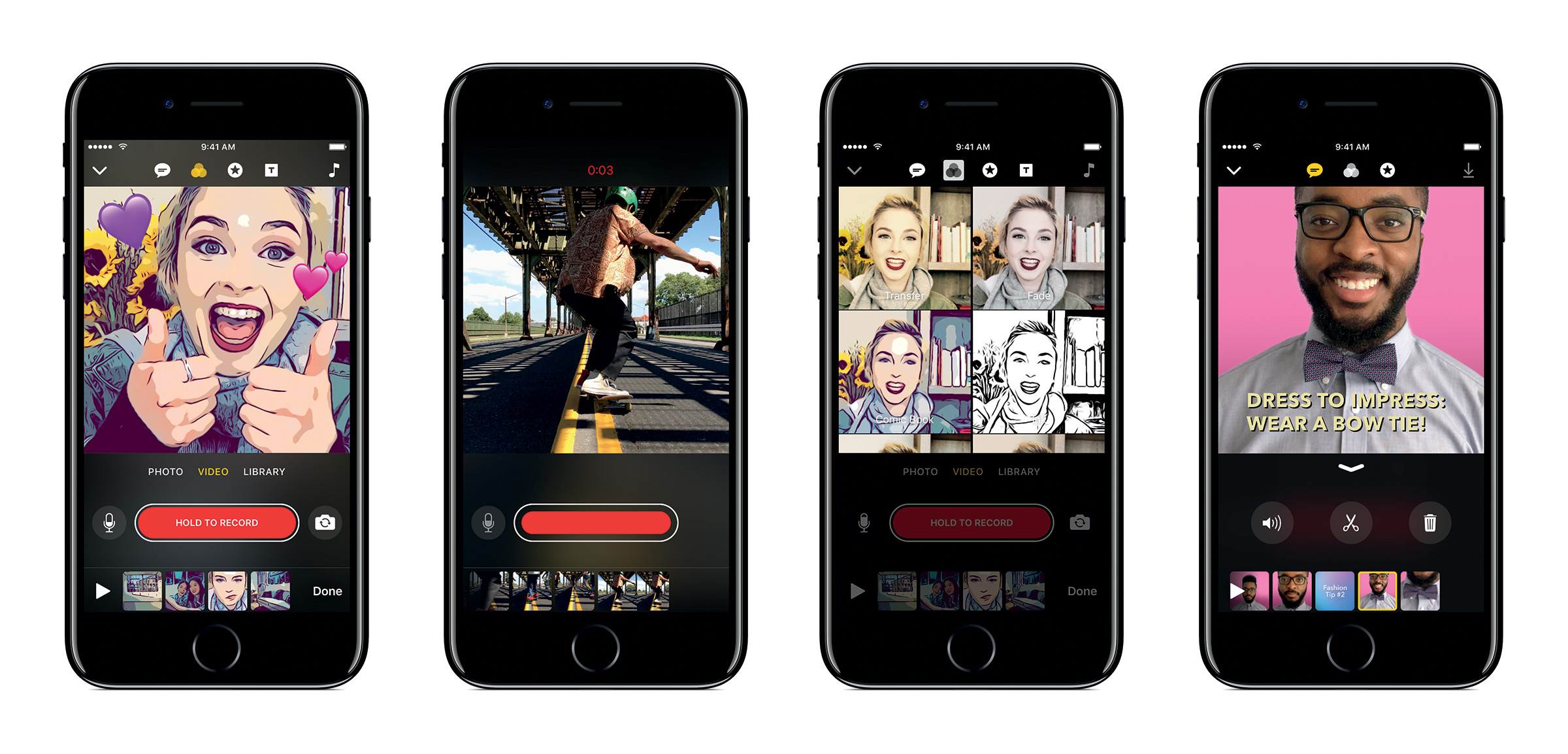
Earlier this month, Apple announced a new video editing app coming for it's devices called Clips. Unlike Apple's other video editing softwares, Final Cut Pro X and iMovie, Clips is specifically geared towards short, social media videos. The app will allow users to record or select video from the camera, add filters and text, trim, and share. On face-value, it appears that Clips is an attempt to be like snapchat, although according to many, it has much more potential than that.
Margaret Rhodes reports for Wired:
YOU MAY BE tempted to compare Clips, Apple’s new mobile video app, to Snapchat and Instagram. When it appears in the App Store next month, the slick new app will feature filters, stickers, and a press-to-record UI that makes it easy to capture, edit, and share snippets of video. But Clips is no mere Snapchat clone.
For starters, Clips is a tool, not a platform. Yes, you can use it to make highlight reels of your cat, but you’ll still do your sharing over iMessage (or, more likely, your social network of choice). It’s also smart: Clips uses facial recognition to identify the people in your videos, and suggest people to share them with. But what really sets the app apart is a feature Apple calls Live Titles, which turns your spoken words into on-screen text. It also goes one crucial step further: Apple claims it synchronizes the text to the cadence of your voice. If it works as advertised, Clips’ speech-to-text feature will be the easiest method yet for close-captioning social videos. That makes Live Titles a neat solution to an ironic—and increasingly irksome—problem: The more people use video to communicate, the more they need text to tell them just what those videos are saying.

APPLE
Blame autoplay. Next time you find yourself browsing your favorite social feed, pay attention to all the videos that play unprompted as you thumb through. Then notice how many are muted. Muted videos are infinitely more courteous than unmuted ones, not to mention easier to watch when riding the subway at rush hour, standing in line at the grocery, or talking with mom on speaker phone—provided they have captions. Text-on-screen has become a crucial barrier to entry not just for media outlets and YouTube stars, but anyone who wants their social videos to be seen by as many eyeballs as possible. People are consuming more video content than ever (according to Facebook’s latest numbers, half a billion people watch 100-million hours of video on the platform every day); it stands to reason they’re watching more muted content than ever, too.
Read the full article here.


